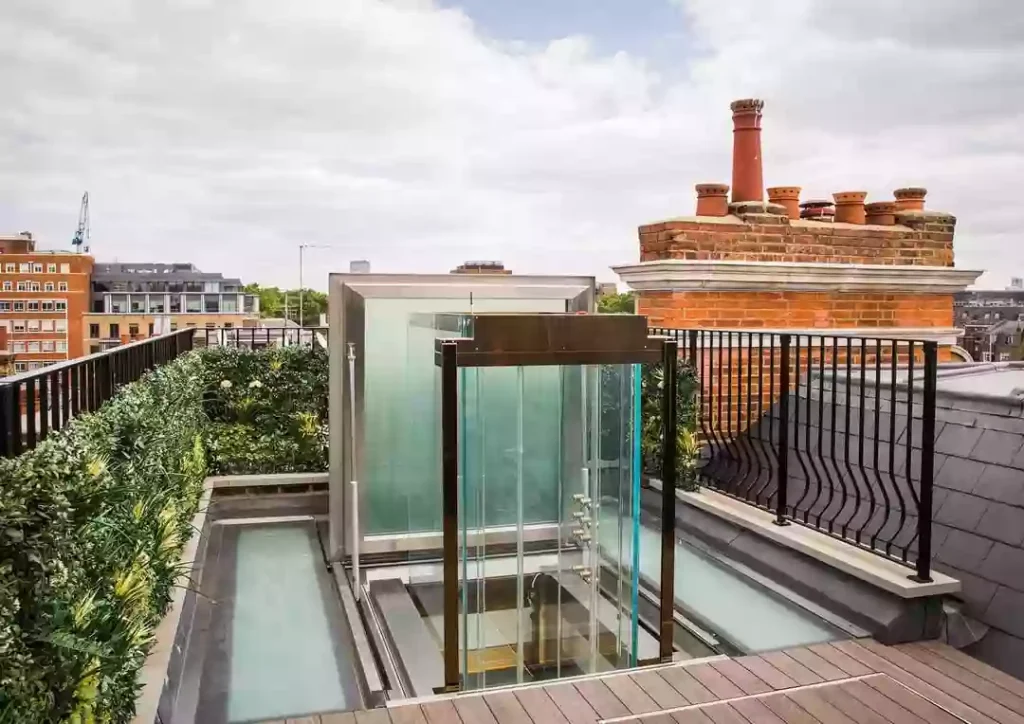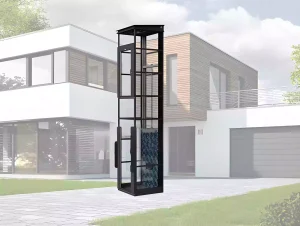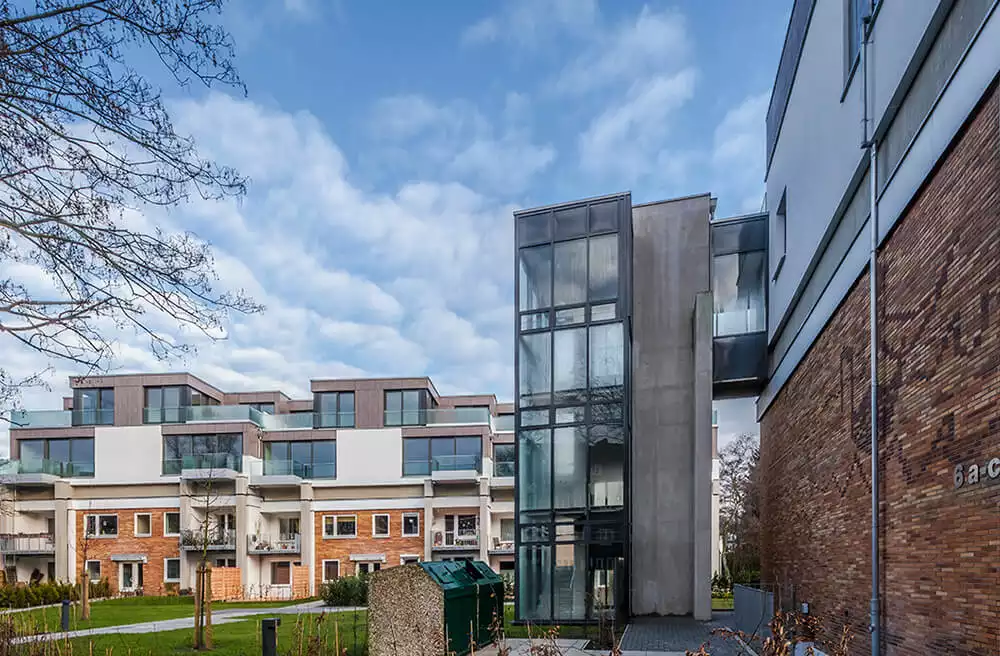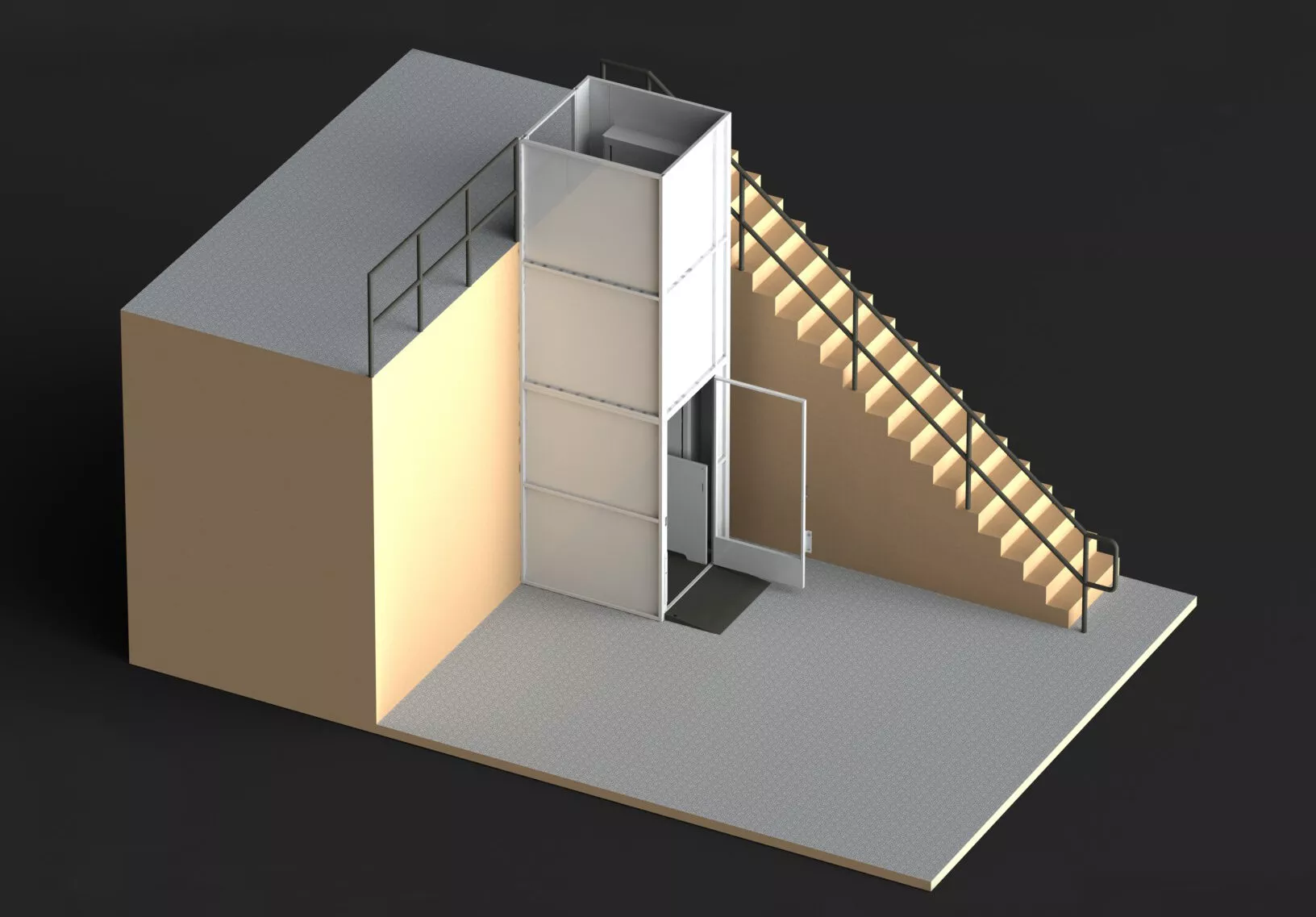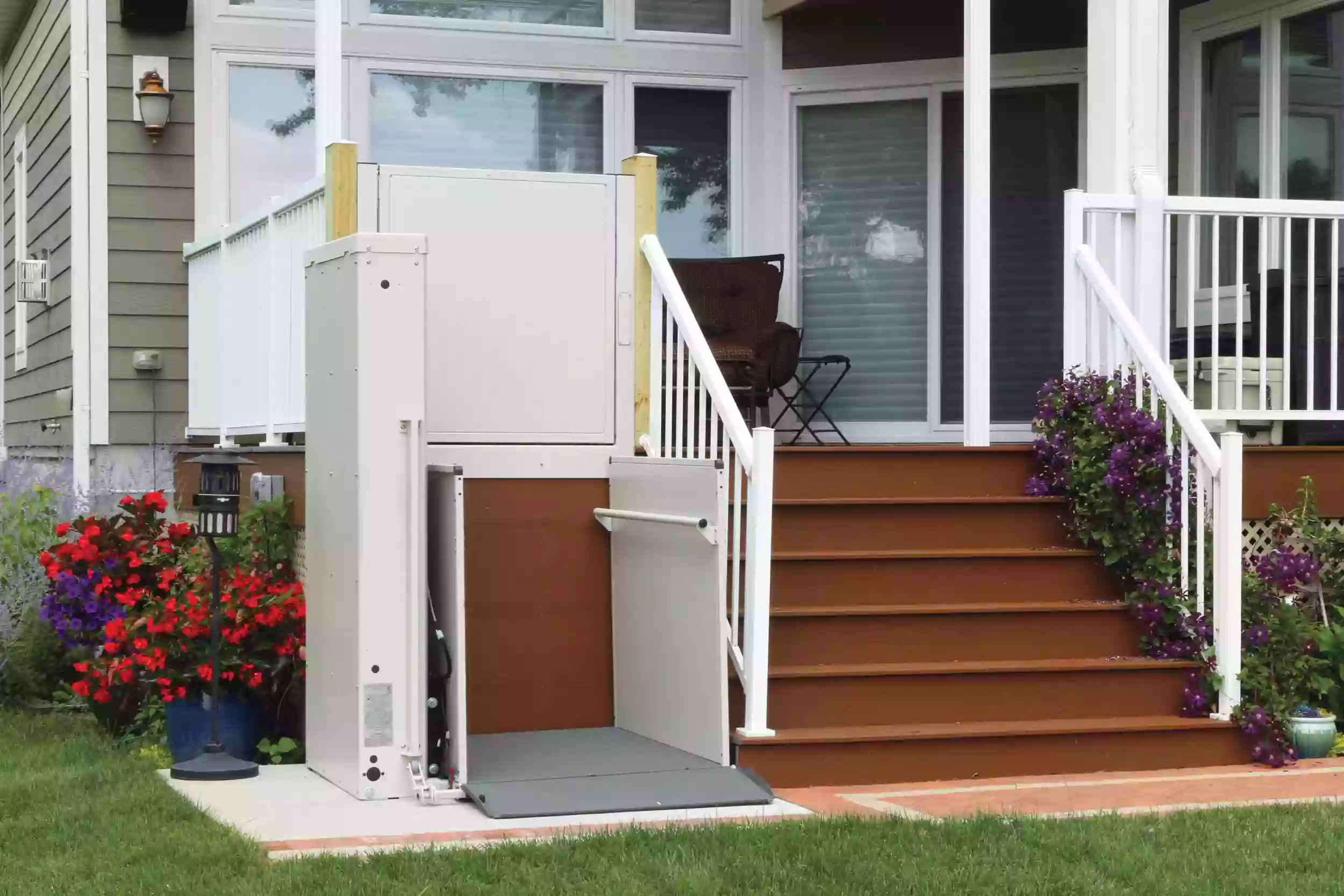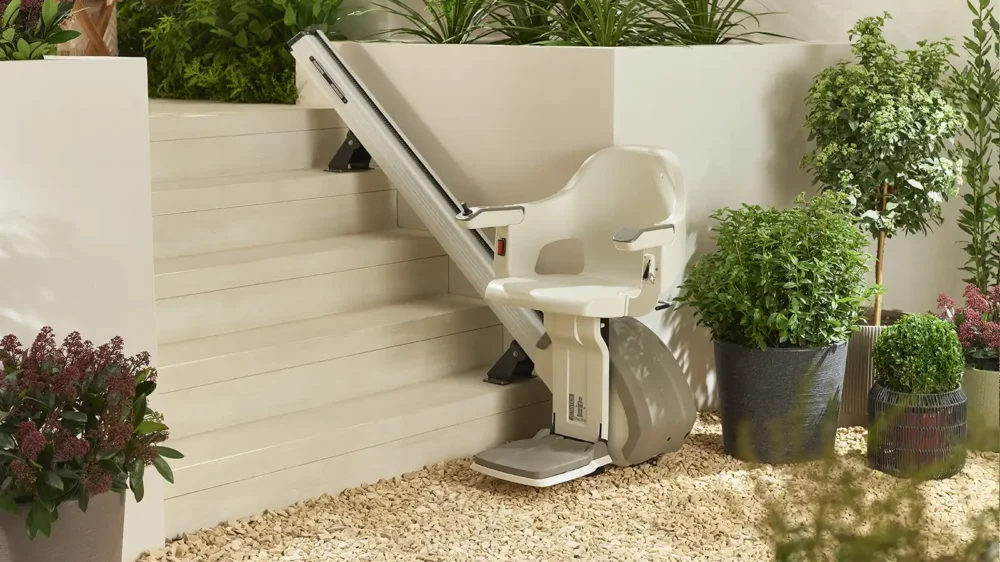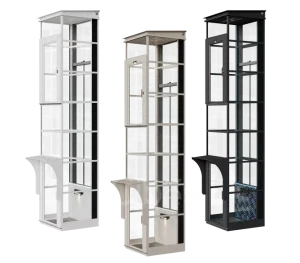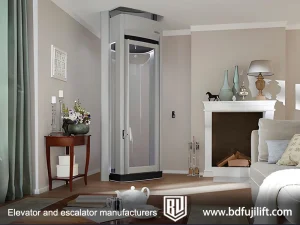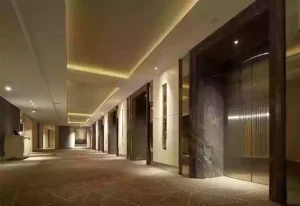Cost Insights
The cost of installing an outdoor residential elevator (an elevator mounted on the outside of the building) typically ranges from US $10,000 to US $60,000.
For a simple external vertical platform lift (like a machine-room-less design with minimal structural changes, usually covering one or two floors), the average cost is around US $6,000.
The majority of the cost comes from the equipment itself, along with installation preparation and structural modifications (such as creating an elevator shaft, reinforcing the structure, adding external weatherproofing, and power connection). For example, the equipment cost could range from US $1,000–40,000, while site preparation and structural modifications may cost between US $500–15,000.
Additional costs include: permits, building approvals, structural inspections by engineers, annual inspections, and maintenance. For example, a permit could cost between US $200–2,000, annual inspections can be around US $75–300, and a maintenance contract would cost between US $200–350 per year.
If you didn’t plan for an elevator shaft during the initial construction but want to install an elevator later, outdoor elevators are a great solution. They minimize the impact on the existing structure while improving the overall living experience and comfort. Below, we’ll share the costs and reliable solutions for outdoor elevators.
How Much Do Different Types of Outdoor Elevators Cost?
Glass Curtain Wall Outdoor Elevators
Glass curtain wall outdoor elevators are often chosen for high-end homes. These elevators use large glass panels for the shaft or cabin, offering stunning views and a modern, luxurious look. The cost of these elevators is higher, ranging from US $40,000 to $120,000, but their beauty and functionality make them a top choice for high-end users.
Fully Enclosed Outdoor Elevators
Fully enclosed outdoor elevators are a more traditional and practical choice. They typically use metal structures or other enclosed materials, with fully enclosed cabins and shafts. While the design is more basic, these elevators are more affordable, with average costs ranging from US $30,000 to $80,000. Fully enclosed outdoor elevators are also stronger, making them ideal for environments requiring wind or moisture resistance.
Vertical Platform Lifts (VPL)
Vertical platform lifts are a common choice for medium to short trips, especially for people who use wheelchairs, walkers, or electric scooters. The cost of these lifts ranges from US $5,000 to $15,000, and they can be installed flexibly at various locations, such as building entrances, loading areas, or along terraces.
Outdoor Stair Lifts
If your home has stairs leading to an upper floor or a terrace, an outdoor stair lift could be a great solution. The cost of these lifts ranges from US $3,000 to $8,000. They run along the stair tracks and are ideal for users who can transfer themselves into the seat. These are best suited for short outdoor staircases or ramped entrances.
How Much Does It Cost to Install an Outdoor Elevator in a 5-Story Villa?
For a 5-story villa, installing a glass outdoor elevator typically costs around US $70,000 to $120,000, while a fully enclosed outdoor elevator ranges from US $50,000 to $80,000. The exact price depends on factors such as the number of floors, design complexity, selected materials, and any required structural modifications.
Breakdown of Outdoor Elevator Installation Costs
When installing an outdoor elevator, labor costs typically account for 30% to 50% of the total cost, while the equipment itself makes up around 50%. Here’s a breakdown of the most common costs for glass and fully enclosed outdoor elevators:
Materials/Equipment Costs
| Material/Equipment | Unit Cost |
|---|---|
| Elevator Equipment (cabin, control panel, traction wheels, etc.) | $6,000 – $50,000 |
| Glass (curtain wall or scenic glass) | $20 – $50 per square foot |
| Installation Base Materials (concrete foundation, reinforcements, etc.) | $500 – $3,000 |
| Safety Features (e.g., safety net, support brackets) | $100 – $1,000 |
Permits
Before installing an outdoor elevator, you need to obtain an elevator permit. In most cases, the elevator supplier or installer can help you with the permit process, but this service may come at an additional cost. Whether it is included in the total cost depends on your contract agreement. The cost of elevator permits typically ranges from $500 to $2,000, depending on local regulations and the complexity of the elevator installation. If structural modifications or additional safety checks are needed, the permit cost may increase.
Factors Affecting Outdoor Elevator Costs
Several factors influence the cost of installing an outdoor elevator. Below are some of the major factors:
-
Elevator Type and Design: The type and design complexity of the elevator significantly affect costs. Glass curtain wall or custom-designed elevators typically use high-end materials like transparent glass and stainless steel, making them more expensive. Fully enclosed elevators are usually simpler and more affordable.
-
Number of Floors and Elevator Travel: The number of floors and the travel height of the elevator directly affect the installation cost. As the number of floors increases, the elevator’s load capacity, shaft length, and structural complexity also increase, leading to higher costs.
-
Elevator Load Capacity: The load capacity of the elevator determines the strength of the design and materials. Larger capacity elevators usually require more powerful motors, stronger support systems, and reinforced structures, all of which add to the installation cost.
-
Structural Modifications: If installing the elevator requires structural modifications to the existing building (e.g., adding an elevator shaft, reinforcing foundations or walls), these costs can be significant.
-
Material Selection: The choice of materials for the elevator’s exterior (glass, steel, aluminum) and interior finishes (flooring, lighting, control panels) directly affects costs.
-
Installation Environment: Installing in areas with harsh weather conditions or in earthquake-prone zones may require additional protective measures, adding to the construction and material costs.
-
Elevator Supplier and Brand: Well-known brands or custom service providers typically charge higher fees but may offer better quality equipment and longer warranty periods.
-
Permit and Approval Costs: Installing an outdoor elevator usually requires building permits and elevator safety certifications. Different areas have different permit requirements, and the complexity of the approval process can affect total costs.
-
Maintenance and Care: Long-term maintenance and upkeep are important factors to consider when budgeting for an outdoor elevator. Some high-end elevators may require more frequent or specialized maintenance, which will impact the overall budget.
How to Save Money on Installing an Outdoor Elevator
Here are some ways to reduce costs when installing an outdoor elevator:
-
Choose a standard model instead of a custom-designed elevator.
-
Opt for an appropriate installation location to reduce the complexity of the elevator shaft construction.
-
Use pre-fabricated elevator shafts or structural components.
-
Eliminate unnecessary decorative materials or safety features.
-
If you are installing multiple elevators, consider bulk purchasing and installation to save costs.
-
Compare quotes from different elevator suppliers and choose a cost-effective provider.
-
Select elevator types with lower maintenance costs and ensure the equipment is durable.
Advantages of Outdoor Elevators
-
Save Indoor Space: If the building was not originally designed with an elevator shaft, adding one indoors can make the space feel cramped. Installing an elevator outdoors saves indoor space and facilitates the movement of goods.
-
Reduce Noise Disruption: Elevators can generate noise, but when installed outside, the noise is isolated, keeping your indoor environment quieter and more comfortable.
-
Increase Property Value: Installing an elevator enhances the overall aesthetic and quality of a home, adding a modern touch and increasing the property’s value.
Outdoor Elevator Solutions
Steel Structure with Glass Curtain Wall
A steel structure with a glass curtain wall is one of the most common solutions for outdoor elevators. This system combines corrosion-resistant aluminum or steel frames with double-layer laminated glass. Passengers can enjoy scenic views while traveling between floors, and the structure provides excellent sound insulation. However, privacy can be a concern, and prolonged exposure to outdoor conditions may increase maintenance costs.
Fully Enclosed Shaft Outdoor Elevator
Fully enclosed shaft elevators typically use steel or concrete shafts, making them a better choice for users seeking more privacy. They offer better insulation, keeping cabin temperatures stable, and are less affected by external conditions like wind and rain, making them lower maintenance. However, they lack the scenic appeal and can feel more enclosed and less airy.


